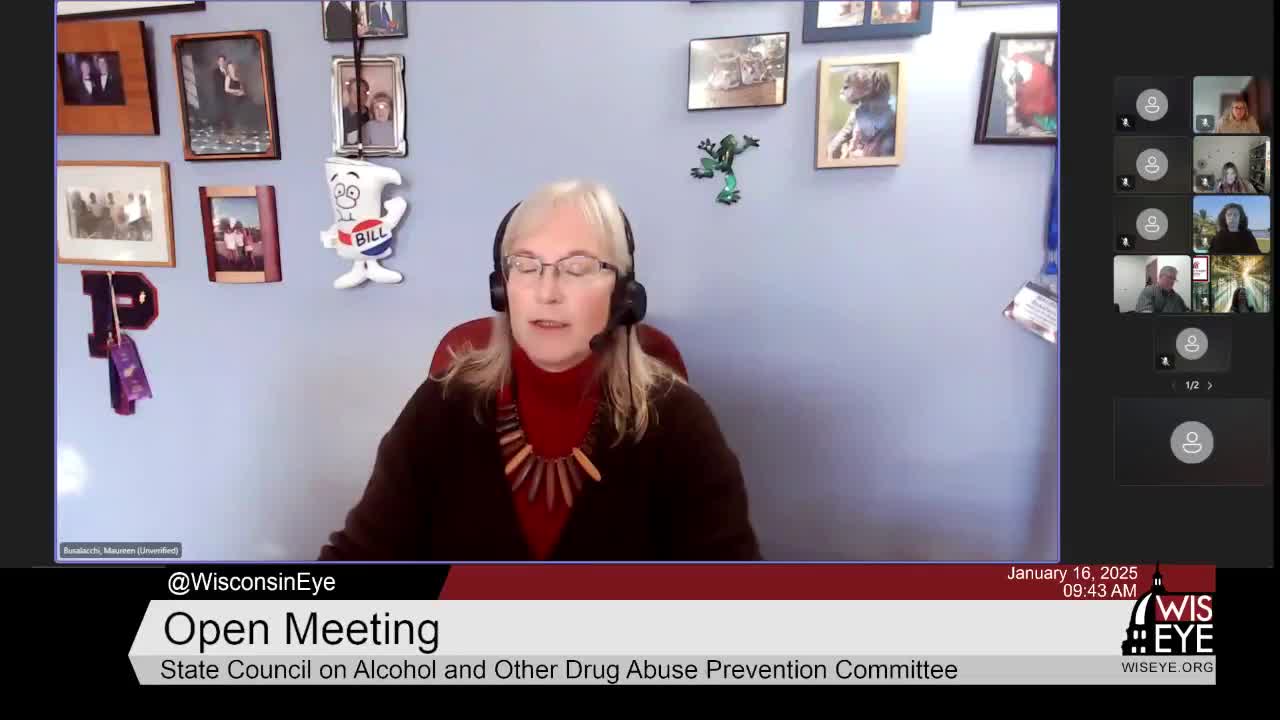Wisconsin youth alcohol consumption rises with girls leading binge drinking trends
January 16, 2025 | Events, Wisconsin
This article was created by AI summarizing key points discussed. AI makes mistakes, so for full details and context, please refer to the video of the full meeting. Please report any errors so we can fix them. Report an error »

In a recent meeting of the State Council on Alcohol and Other Drug Abuse Prevention Committee, members gathered to address pressing issues surrounding alcohol consumption and its impact on Wisconsin's youth. The atmosphere was charged with urgency as discussions unfolded about the alarming trends in underage drinking, particularly among young women.
One committee member highlighted the significant media attention surrounding alcohol-related health risks, noting that the Milwaukee Journal Sentinel had published multiple stories on the topic, a rare occurrence that has sparked community conversations. This newfound awareness, coupled with initiatives like "Dry January," aims to encourage individuals to rethink their relationship with alcohol.
The committee also examined data from the 2023 Youth Risk Behavior Survey, revealing a troubling disparity in drinking rates between high school girls and boys. Approximately 30% of high school girls reported current alcohol use, compared to 22% of boys. This trend raises concerns, as early drinking in adolescence often leads to increased risks of binge drinking and long-term alcohol dependency.
Moreover, the discussion touched on the rising prevalence of binge drinking among young women, with marketing strategies increasingly targeting this demographic through appealing products like hard ice cream and fruity alcoholic beverages. The committee expressed the need for heightened awareness and community engagement to combat these trends, particularly as they relate to the health risks posed to future generations, including fetal alcohol spectrum disorders.
As the meeting progressed, members acknowledged the intersection of alcohol use with mental health issues, particularly among young women. There is a growing concern about the correlation between high rates of alcohol consumption and increased levels of depression and anxiety. However, a recent report from the Department of Children and Family failed to address substance use in its analysis of youth mental health, prompting calls for a more integrated approach to these interconnected issues.
The committee's discussions underscored the importance of ongoing education and community involvement in addressing alcohol-related harms. With the stakes higher than ever, members left the meeting with a renewed commitment to fostering safer environments and promoting healthier choices among Wisconsin's youth.
One committee member highlighted the significant media attention surrounding alcohol-related health risks, noting that the Milwaukee Journal Sentinel had published multiple stories on the topic, a rare occurrence that has sparked community conversations. This newfound awareness, coupled with initiatives like "Dry January," aims to encourage individuals to rethink their relationship with alcohol.
The committee also examined data from the 2023 Youth Risk Behavior Survey, revealing a troubling disparity in drinking rates between high school girls and boys. Approximately 30% of high school girls reported current alcohol use, compared to 22% of boys. This trend raises concerns, as early drinking in adolescence often leads to increased risks of binge drinking and long-term alcohol dependency.
Moreover, the discussion touched on the rising prevalence of binge drinking among young women, with marketing strategies increasingly targeting this demographic through appealing products like hard ice cream and fruity alcoholic beverages. The committee expressed the need for heightened awareness and community engagement to combat these trends, particularly as they relate to the health risks posed to future generations, including fetal alcohol spectrum disorders.
As the meeting progressed, members acknowledged the intersection of alcohol use with mental health issues, particularly among young women. There is a growing concern about the correlation between high rates of alcohol consumption and increased levels of depression and anxiety. However, a recent report from the Department of Children and Family failed to address substance use in its analysis of youth mental health, prompting calls for a more integrated approach to these interconnected issues.
The committee's discussions underscored the importance of ongoing education and community involvement in addressing alcohol-related harms. With the stakes higher than ever, members left the meeting with a renewed commitment to fostering safer environments and promoting healthier choices among Wisconsin's youth.
View full meeting
This article is based on a recent meeting—watch the full video and explore the complete transcript for deeper insights into the discussion.
View full meeting
